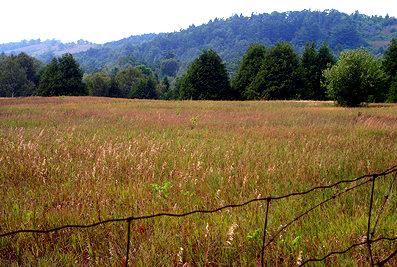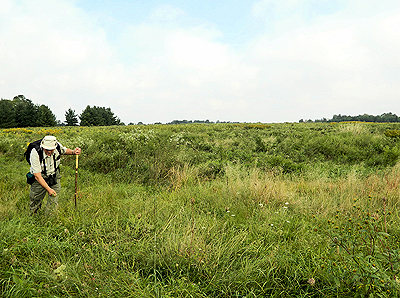Prince Edward County, Ontario, Canada
Birding Abandoned Fields
No doubt you have noticed as you have been driving the back roads this past month, birds flitting around in grassy meadows and darting from bush to bush. This month we check out the “little brown jobs,” the sparrows. They are passing through right now, and one good area to flush out a few for observation and identity, is an abandoned weedy field or a roadside ditch.

The farm where I spent my youth cultivating fields, harvesting crops and bringing the cows in from pasture, has been abandoned now for more than 35 years. Fields that grew corn for ensilage are now thick with red cedars. Another field we popularly referred to as “the flat” and which I have not so fond memories of picking tomatoes for a local canning factory, is now thick with white ash saplings. Others such as “the back sandy loam,” and the “Latta hill field” have escaped the ravages of invasive trees, but have accumulated dense thatch due to two decades of neglect, resulting in tangles of timothy, brome, and something we always referred to as “wire grass.”
While a bitter disappointment to my family who sweated for several decades to improve the farm, the change in habitat has opened up new opportunities for wildlife that never before occurred here. In one field, where killdeers and vesper sparrows used to cavort in the furrows ahead of the plow, the succession of red cedars has provided nesting habitat for clay-colored sparrows. The vesper sparrows, in general, are long gone from the farm, but new opportunities have paved the way for myriad birds never before seen during our days on the farm.
It was in one such field in 1996, that two Henslow’s sparrows remained for a week or more, exploring the neglected field of brome grass that had provided potential breeding habitat for these reclusive birds who like thick thatch for them to hide in during the nesting season. Clay-colored sparrow colonies on our old farm have exploded, and woodcocks and ruffed grouse now happily nest in the wooded areas where our cows sometimes pastured.

With small farms disappearing at an increasing rate, these abandoned and neglected fields provide plenty of birding opportunities, particularly at this time of the year. At first glance, the fields appear to be deserted, but a walk through the grassy growths will soon flush swarms of migrating sparrows as they feed on a bountiful crop of seeds from weeds and grasses. If you have access to such habitat, now is a good time to penetrate the depths of neglected farms and you may be amazed at what you will find. Make certain, however, that you obtain the permission of the landowner before you do so, and exercise caution if it is during the hunting season, as these areas are often popular destinations for upland game hunters as well.
It is encouraging in this age of wanting to reforest every bit of open space that we see, that interest is also growing in wanting to preserve open spaces for those birds which require them, such as many of the sparrow species, meadowlarks, bobolinks, etc.
Good luck with the sparrows! There are more than a dozen sparrow species, commonly recognized as such, that you could possibly bump into during your exploration of a weedy field. With lots of young of the year with the, they will be a challenge. A good field guide and lots of patience will be required to sort them all out.